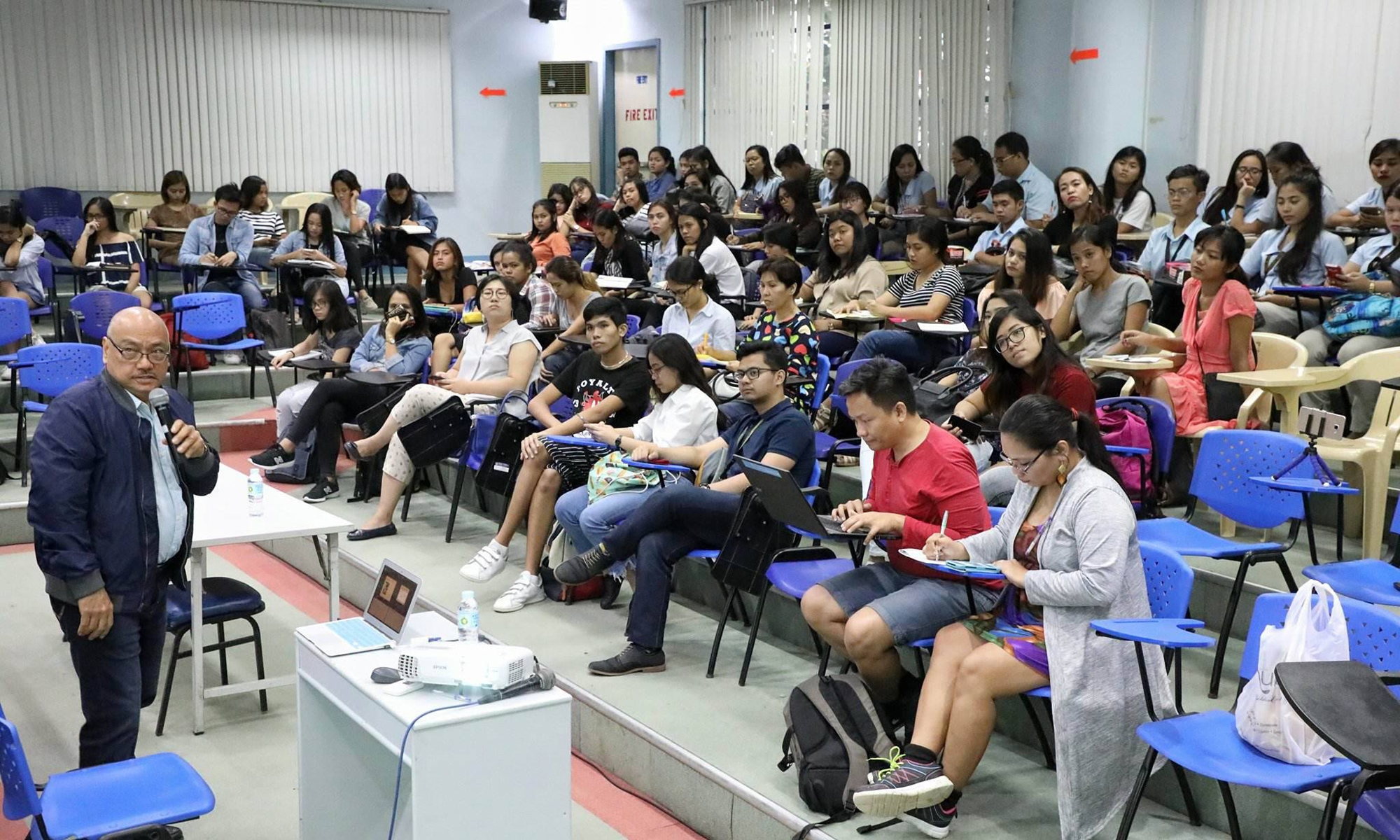
PRESS FREEDOM/SEPT 22,2017: Abelardo Olanday, publisher Cebu Daily News and Inquirer.net share his knowledge on the rise of digital journalism during the Cebu Daily News Conversation before mass communications students from different school and universities in Cebu. The forum is part of the 25th Cebu Press Freedom week celebration at USPF Moot Court.(CDN PHOTO/TONEE DESPOJO)
CDN publisher shows how the digital age has transformed print journalism landscape
Apart from fake news and social media trolls, journalists are faced with the challenge of writing and publishing news on a digital platform with shorter content, more interactive discussion and faster news delivery compared to the printed form.
Abelardo Ulanday, CDN publisher and head coordinator of Inquirer.net, the website portal of CDN’s sister company, the Philippine Daily Inquirer (PDI), highlighted the evolution of news media since the print industry transitioned from the traditional to digital form in the last 20 years.
Ulanday was the speaker of “CDN Conversations: The Rise of Digital Journalism” organized by Cebu Daily News. The forum was one of the activities of this year’s Cebu Press Freedom Week celebration.
He also gave the audience, made up of communication students from different Cebu universities, a glimpse of how media industries today transmit and publish news both in the print and online platforms.
Digital revolution has forced print journalists to do live reporting, which is usually done by their counterparts in the radio and television.
“Our reporters are trained to break news first by tweeting them or posting them online. We gather news and details and write them about a few hours later. Now, you have to feed (the desk or newsroom) with the latest updates. They’re doing real-time reporting now,” said Ulanday.
Citing statistics from Internet World Stats on Internet Users in the World by June 30, 2017, Ulanday showed that Asia had the largest share of internet users.
“Out of 7.5 billion people in the world, 55% belongs to Asia. Netizens in Asia account for 49.7 percent. This is actually an opportunity for investors to do business in Asia because figures show that we have a lot of people who have access to the internet,” said Ulanday.
Media stakeholders are faced with various challenges which include attracting new readers while trying to hold on to existing “usually aging ones.”
There is also the challenge on the financial viability of print, decline in circulation and big drop in advertising revenues.
Despite the popularity of the digital platform, online revenues still account for a small fraction of the income from traditional print or broadcast.
“Several newspapers from abroad have eventually closed down because of transitioning from print to online,” Ulanday said.
CDN opinion editor Stephen Capillas and CDN columnist Jason Baguia, two reactors of yesterday’s forum, raised the presence of fake news on the internet, which poses a threat on the performance of legacy journalists or traditional media outlets.
Capillas stressed the importance for journalists to take to heart the basic principles of journalism, such as upholding accuracy, truthfulness, and getting both sides of the story, to build a more credible reputation against fake ones.
“It all goes down to basic training. The field (online) is so wide open now. People can be their own content providers,” he said.
CDN editor in chief Edralyn Benedicto cited the need for journalists to be multi-skilled to fight fake news.
“The only way to fight fake news and bad journalist is to fight them with good journalism using the same platform,” Benedicto said.
Baguia, who teaches Media Ethic at the University of the Philippines Cebu, said fake news should not deter credible media outlets to continue to give real news and information.
“Legacy journalists are like stars shining in today’s dark age of misinformation,” he stated. /With Correspondent Cris Evert Lato-Ruffolo